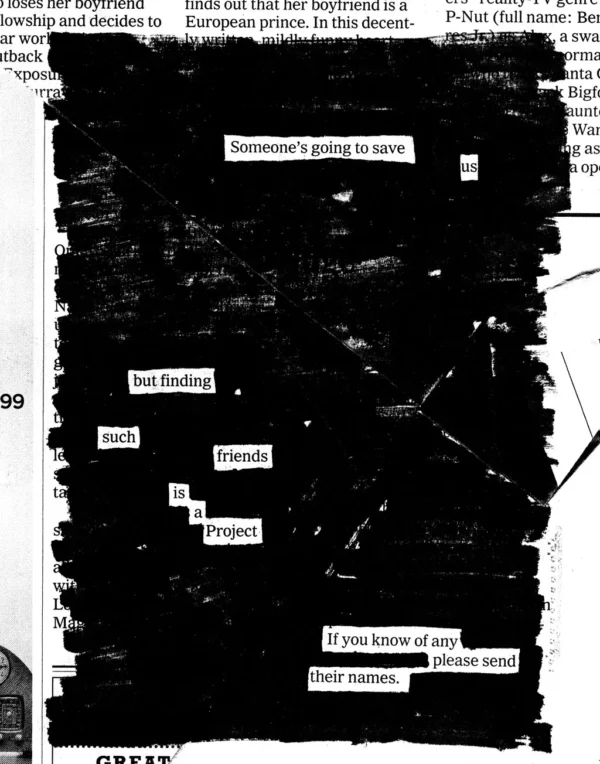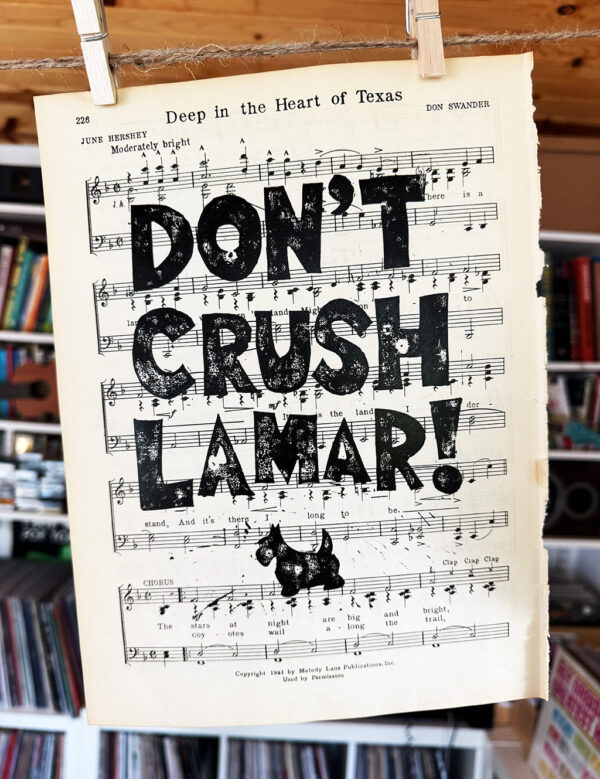
Here is an old blackout poem I stuck in Tuesday’s letter, “Your next best friend,” which is about making good friends — with people and books.
We spend a lot of our lives as readers on the search for new books. But how many great books are already waiting for us on our shelves? How many favorite authors would we form deep relationships with if we simply read or re-read a few more of their books?
I really like the way this one turned out. You can read the whole thing here.



